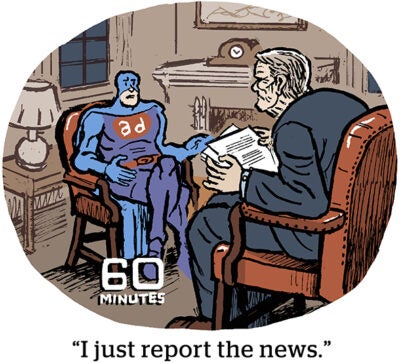No doubt you’ve heard of Huawei. It’s one of the largest device manufacturers in China and in the world.
But did you know that it also has an ad exchange?
The exchange launched in 2020, and Huawei Ads rebranded to Petal Ads late last year as part of an effort to expand its global presence and attract advertisers from outside of China that are looking to reach Chinese audiences.
Although Petal Ads is available in 170 markets, most of Huawei’s user base is in China. Huawei has more than 25% of the smartphone market share in China, said María Ramiro Martín, head of business development for the Western EU division of Petal Ads.
Globally, roughly 730 million people have a Huawei device.
Still, Huawei operates in an uncertain environment.
In 2019, the US government placed Huawei on a trade blacklist, effectively barring US businesses from working with the company and restricting the sale of new Huawei devices. Shortly thereafter, Google banned Huawei from using Google Mobile Services, which sits on top of the Android operating system, triggering an existential crisis for the Chinese device maker.
Huawei had been using the Android OS to power its smartphones.
Operation new OS
Following the US ban, Huawei rolled out its own OS for smartphones, called HarmonyOS, to lessen its dependence on Android.
The move away from Android’s OS was necessary to give Huawei more control over its own destiny.
But Petal Ads is using the switch as part of its pitch to advertisers that a homegrown operating system like HarmonyOS is better for reaching Chinese audiences than Android alone.
“Owning both the hardware and the software makes user targeting within Petal Ads very accurate,” Ramiro Martín said.
Moving away from Android’s OS may also somewhat shield Petal Ads from the dual challenges of third-party cookie deprecation and the likely eventual phaseout of the Android ad ID.
Building blocks
Huawei connects its ad exchange to the API that programs Huawei devices.
But Petal Ads can also serve ads into apps on Android devices outside the Huawei ecosystem through its SDK, which is integrated with over 360,000 publishers globally.
Huawei operates its own supply-side platform, demand-side platform and data-management platform that provides access to first-party data about Huawei device owners that the company derives from device IDs, including age, gender, device type and what types of apps someone is using.
Advertisers can also match their own first-party data to Huawei’s data for campaign planning and buying if they choose to.
In addition to relationships with agency holding companies, such as GroupM and Havas Media, Petal Ads is branching out internationally by partnering with other SSPs and DSPs to make its inventory more accessible. It’s also striking deals with other DMPs so that advertisers can tap into third-party data for planning and targeting.
Petal Ads uses third-party mobile measurement platforms for attribution, such as Adjust, AppsFlyer and Kochava.
The privacy question
But what about privacy?
Petal Ads claims its business has a privacy-friendly foundation that includes GDPR compliance.
For what it’s worth, its privacy, security and legal teams are nearly all based in Europe, Ramiro Martín said, adding that Petal Ads doesn’t rely on cookies for tracking.
Instead, Petal Ads uses its own first-party data to target advertising, and Huawei device owners can opt in or out of data tracking when initially setting up their mobile device.
Still, opt-in rates are unpredictable and opt outs drastically limit the possibilities for tracking. When users opt out of targeted advertising, attribution becomes far more challenging, Ramiro Martín said.
Petal Ads declined to disclose its opt-in rate.
But opt-in rate aside, US companies aren’t necessarily eager to share American user data with a Chinese company.
And national security concerns in the US about Chinese businesses is on the rise. Just look at what’s happening with TikTok.
This year alone, TikTok’s CEO testified in front of Congress about the company’s data security and privacy practices, and Montana made moves to ban its state residents from downloading the app.
But these developments haven’t been much of an impediment to Petal Ads doing business in the US, Ramiro Martín said, because advertisers don’t actually have to share any customer data to target campaigns.
Branching out
Huawei has an abundance of data available about its own users in China, she said, which is one way it’s hoping to win over global advertisers.
To say that Chinese consumers have a tremendous amount of purchasing power is an understatement. China’s economy is the second largest economy in the world with a GDP of $18 trillion, second only to the US, which has a GDP of $25 trillion, according to December data from the World Bank.
Take “high-end users,” or audiences that tend to spend on expensive or luxury products, a lucrative target for verticals such as luxury goods, travel and financial services. Petal Ads segments this audience based on purchase history and education level, Ramiro Martín said.
And in addition to consumer insights, having its own OS is helpful for cross-device campaign planning because advertisers can make a single ad buy that runs across all Huawei devices, including smartphones, tablets and smart watches.
HarmonyOS is available on all Huawei devices in China and on some smart devices in Europe, but not smartphones yet.
Rolling out its OS to smartphones outside of China is slow going, but Huawei is on an ongoing mission to expand both its ad exchange and OS beyond Huawei devices.
“Building a new OS involves a lot of testing, and it takes time,” Ramiro Martín said. But “adoption is extremely important.”
















